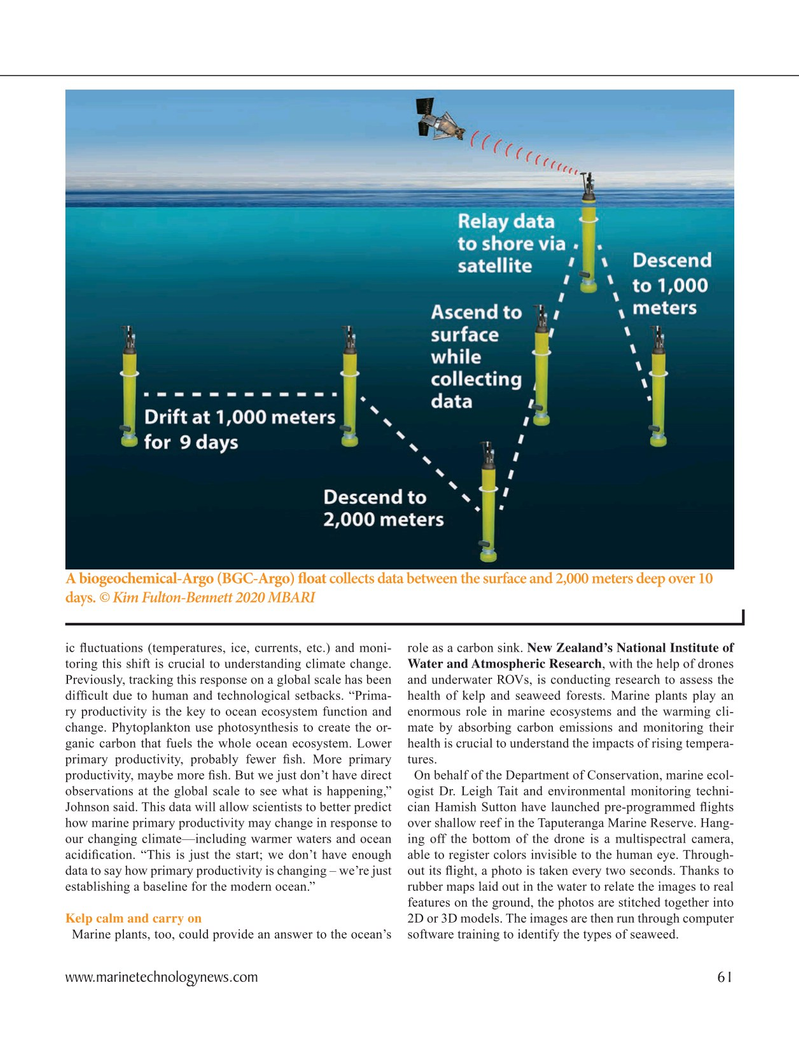
Page 61: of Marine Technology Magazine (September 2021)
MTR100: Focus on 100 Leading Companies, People and Innovations in the Subsea Space
Read this page in Pdf, Flash or Html5 edition of September 2021 Marine Technology Magazine
A biogeochemical-Argo (BGC-Argo) f oat collects data between the surface and 2,000 meters deep over 10 days. © Kim Fulton-Bennett 2020 MBARI ic ? uctuations (temperatures, ice, currents, etc.) and moni- role as a carbon sink. New Zealand’s National Institute of toring this shift is crucial to understanding climate change. Water and Atmospheric Research, with the help of drones
Previously, tracking this response on a global scale has been and underwater ROVs, is conducting research to assess the dif? cult due to human and technological setbacks. “Prima- health of kelp and seaweed forests. Marine plants play an ry productivity is the key to ocean ecosystem function and enormous role in marine ecosystems and the warming cli- change. Phytoplankton use photosynthesis to create the or- mate by absorbing carbon emissions and monitoring their ganic carbon that fuels the whole ocean ecosystem. Lower health is crucial to understand the impacts of rising tempera- primary productivity, probably fewer ? sh. More primary tures.
productivity, maybe more ? sh. But we just don’t have direct On behalf of the Department of Conservation, marine ecol- observations at the global scale to see what is happening,” ogist Dr. Leigh Tait and environmental monitoring techni-
Johnson said. This data will allow scientists to better predict cian Hamish Sutton have launched pre-programmed ? ights how marine primary productivity may change in response to over shallow reef in the Taputeranga Marine Reserve. Hang- our changing climate—including warmer waters and ocean ing off the bottom of the drone is a multispectral camera, acidi? cation. “This is just the start; we don’t have enough able to register colors invisible to the human eye. Through- data to say how primary productivity is changing – we’re just out its ? ight, a photo is taken every two seconds. Thanks to establishing a baseline for the modern ocean.” rubber maps laid out in the water to relate the images to real features on the ground, the photos are stitched together into
Kelp calm and carry on 2D or 3D models. The images are then run through computer
Marine plants, too, could provide an answer to the ocean’s software training to identify the types of seaweed. www.marinetechnologynews.com 61
MTR #7 (50-65).indd 61 9/21/2021 11:35:17 AM

 60
60

 62
62
